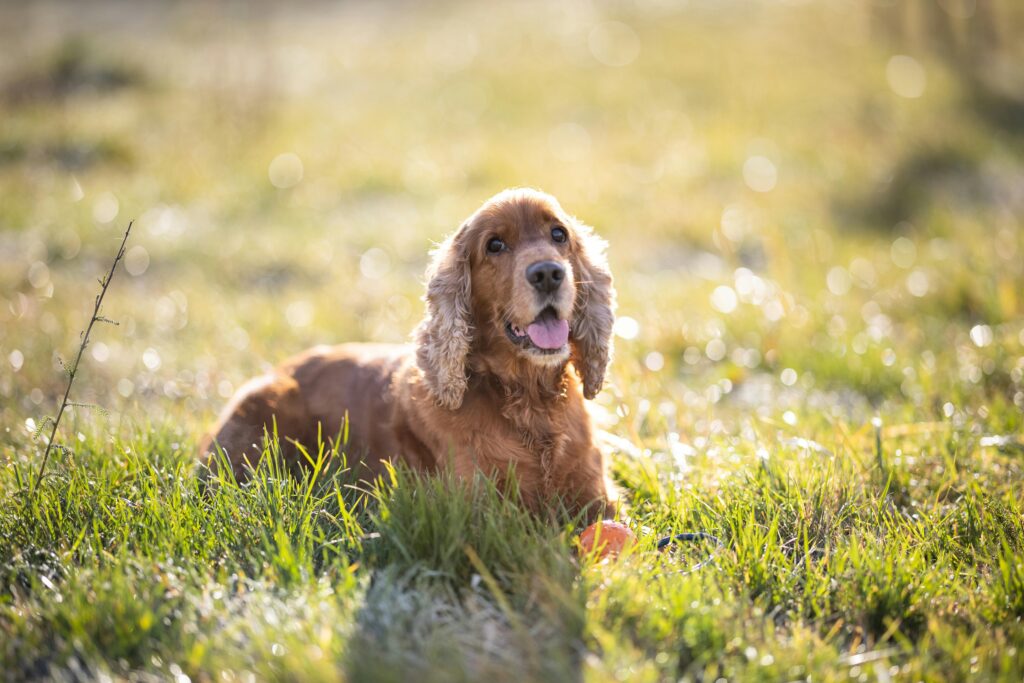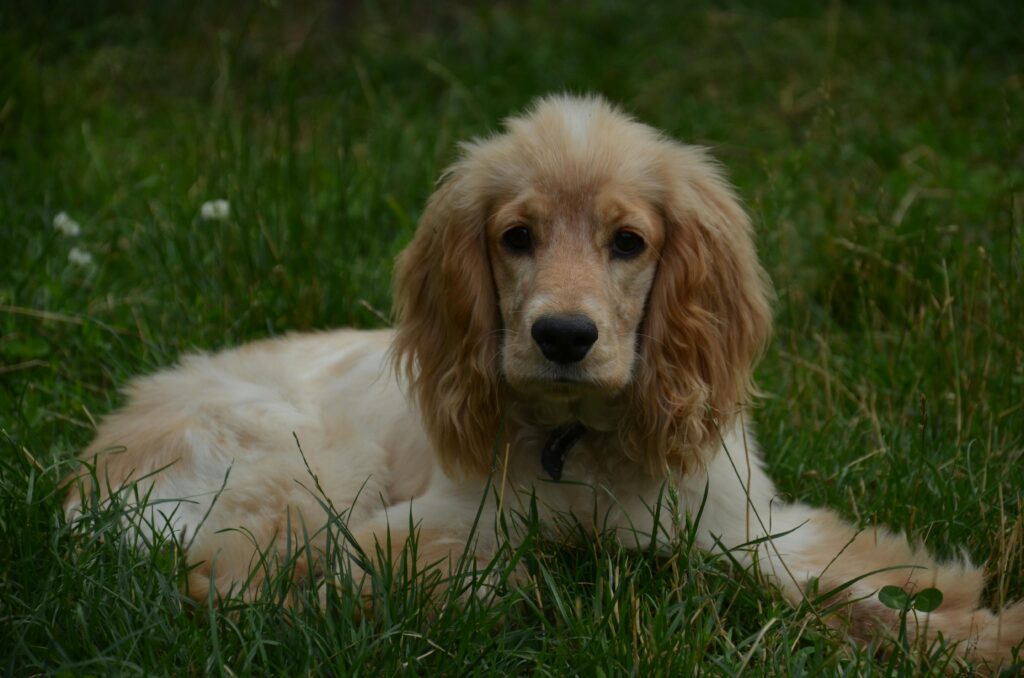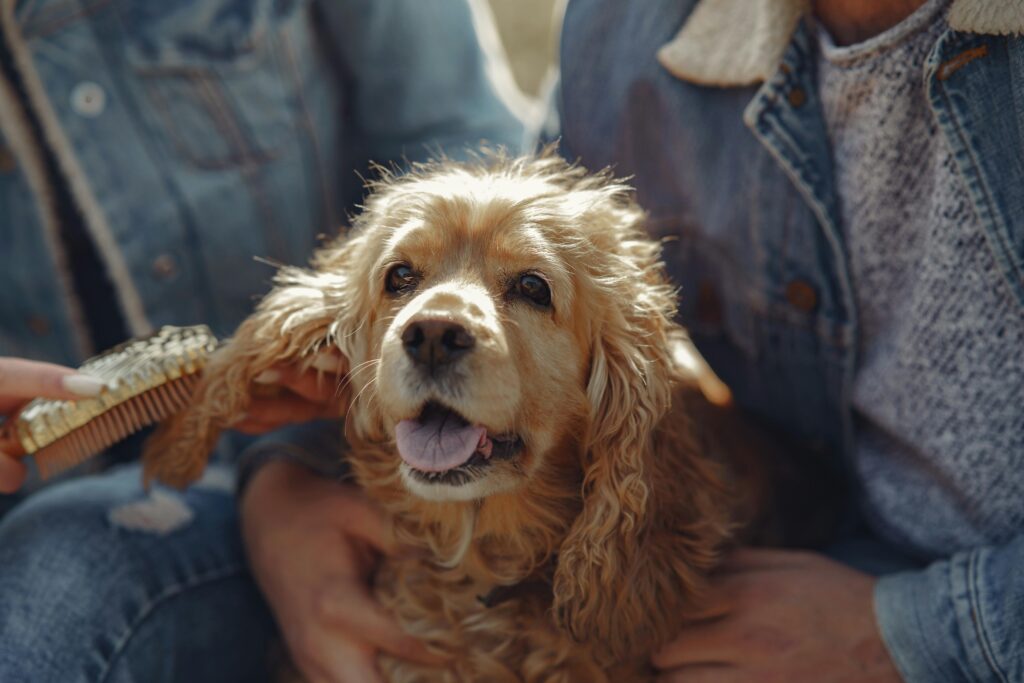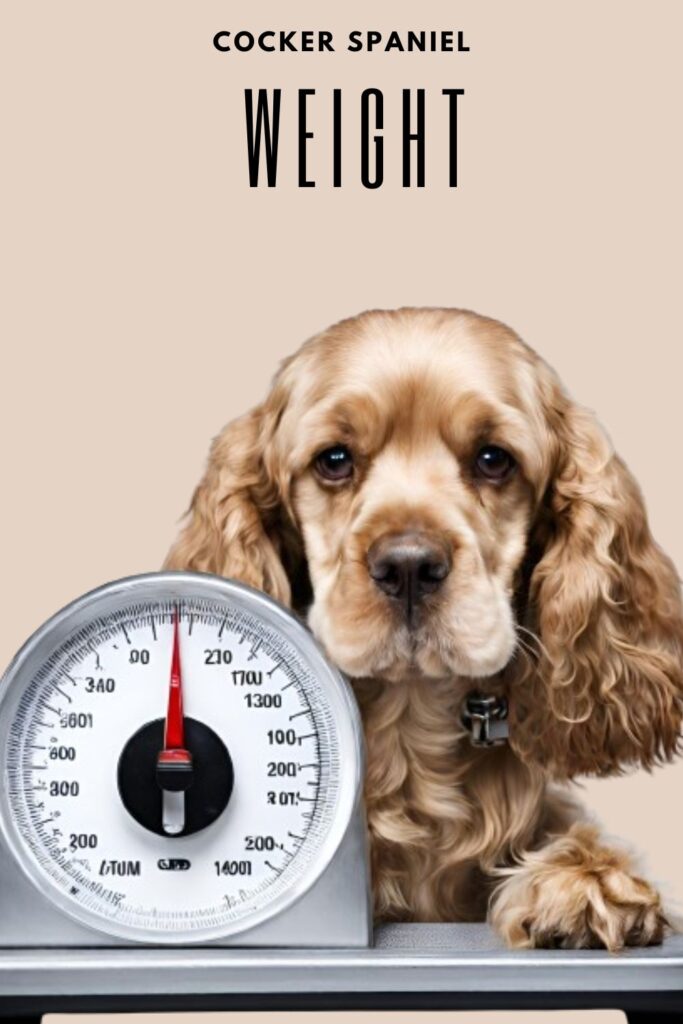Albino Doberman: The BEST Dog Breed Complete Guide 2024
Introduction
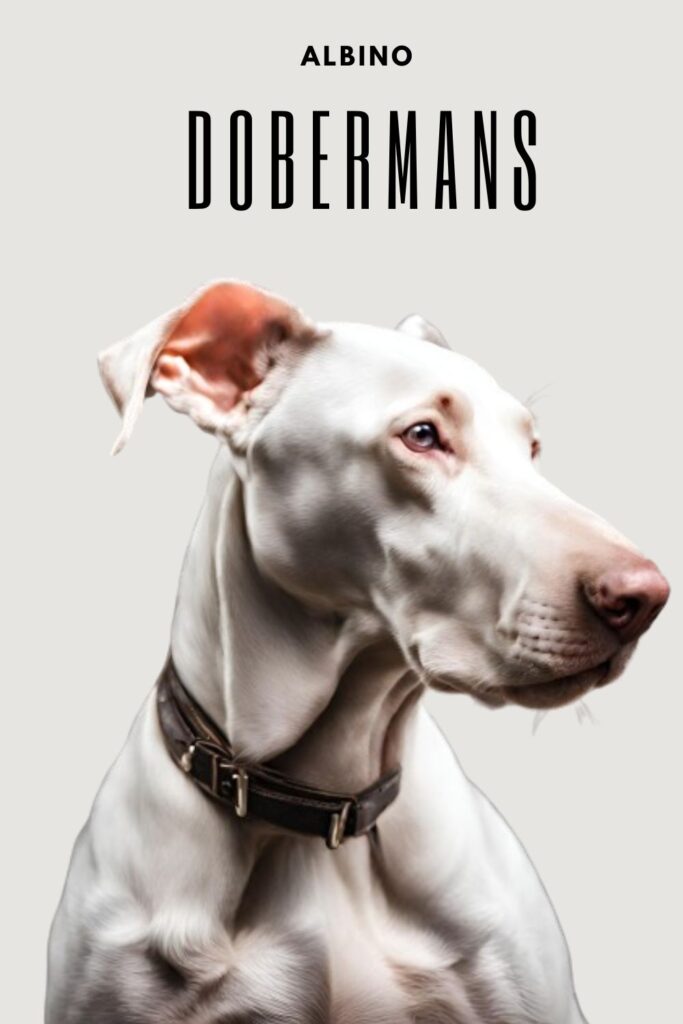
Step into the world of Albino Dobermans, a unique and enchanting variation of the iconic Doberman breed. In this comprehensive guide, we will explore the distinctive characteristics, health considerations, myths, and the proper care these mesmerizing dogs require. Join us as we unravel the mysteries surrounding Albino Dobermans and gain a deeper understanding of this rare and fascinating canine.
The Genetics and History of White Albino Dobermans
Albino Dobermans are often admired for their stunning white coats, are the result of a specific genetic variation that affects pigmentation. Understanding the genetics behind this unique coat color can help dispel common misconceptions and shed light on the distinct characteristics that make these dogs stand out.
The Genetics Behind the Albino Coat Color
The white coat of the Albino Doberman is not due to traditional albinism but rather a condition known as partial albinism, caused by a mutation in the SLC45A2 gene. This gene mutation affects melanin production, leading to a significant reduction in pigmentation in the skin, hair, and eyes.
- Recessive Gene: The albino trait in Dobermans is recessive, meaning both parents must carry the gene for their offspring to exhibit the albino coat. If both parents are carriers of this gene, there is a 25% chance of producing an albino puppy.
- Pigmentation Effects: Due to the reduced melanin, Albino Dobermans typically have a cream-colored coat rather than a pure white one. They also have pink skin, blue or light-colored eyes, and pink noses. The lack of pigmentation around the eyes and other sensitive areas makes them more prone to health issues.
Common Misconceptions
- True Albinism: A common misconception is that Albino Dobermans are true albinos. True albinism would result in a complete absence of pigment, leading to white hair and pink or red eyes. However, Albino Dobermans have some melanin, resulting in their cream-colored coats and light eyes.
- Health Concerns: Another misconception is that all Albino Dobermans are unhealthy. While they do have an increased risk of certain conditions like sunburn, skin cancers, and vision problems due to their sensitivity to light, many can lead healthy lives with proper care and protection from the sun.
Unique Characteristics
- Eye Sensitivity: Albino Dobermans often exhibit photophobia, or sensitivity to bright light, which can make their eyes more prone to certain conditions. Owners should provide shaded areas and consider protective eyewear for their dogs when outdoors.
- Skin Care: Their pink skin is more susceptible to sunburn and other skin issues, necessitating the use of dog-safe sunscreen and protective clothing when spending extended time in the sun.
Historical Context
The first Albino Doberman was born in 1976 in the United States. Named Padula’s Queen Sheba, this dog was discovered to carry a genetic mutation leading to partial albinism. Since then, Albino Dobermans have been a subject of both fascination and controversy.
- Breed Standards: Many breed clubs, including the American Kennel Club (AKC), have debated the place of Albino Dobermans within the breed standard. The AKC, for instance, registers Albino Dobermans with a “Z” in their registration numbers to indicate their condition.
- Breeding Ethics: The breeding of Albino Dobermans is controversial, with many breeders advocating against it due to the associated health risks. Responsible breeders focus on maintaining the health and well-being of the breed, often avoiding the deliberate breeding of dogs with this genetic mutation.
Conclusion
Albino Dobermans are unique and striking dogs, whose white coats result from a specific genetic variation affecting pigmentation. Understanding the genetics and characteristics of these dogs helps dispel myths and highlights the special care they require. Despite the controversies surrounding their breeding, Albino Dobermans have found their place as cherished companions for those who appreciate their distinct beauty and are committed to their health and well-being.
Health Considerations and Care for Albino Dobermans
Albino Dobermans, distinguished by their cream-colored coats and light features, can indeed lead healthy lives with the right care. However, their unique genetic makeup requires specific health considerations, particularly concerning sensitivity to sunlight, potential vision issues, and appropriate preventive measures. Responsible breeding practices are essential to promote their well-being and ensure they enjoy long and happy lives.
Sensitivity to Sunlight
Albino Dobermans have a significant reduction in melanin, the pigment that provides protection against the harmful effects of ultraviolet (UV) radiation. This makes them particularly susceptible to sunburn and skin damage.
- Sunburn Risk: Their pink skin lacks the natural protection offered by darker pigmentation. Direct exposure to the sun can lead to painful burns and increase the risk of skin cancers.
- Preventive Measures:
- Limit Sun Exposure: Keep them indoors during peak sunlight hours (10 a.m. to 4 p.m.).
- Protective Clothing: Use dog-safe clothing or UV-protective gear when they are outside.
- Sunscreen: Apply dog-safe sunscreen to exposed areas, especially the nose, ears, and around the eyes.
Potential Vision Issues
The lack of melanin also affects the eyes, making Albino Dobermans prone to several vision-related issues.
- Photophobia: Sensitivity to light, or photophobia, is common due to the reduced pigmentation in their irises. This can cause discomfort and make it difficult for them to see in bright light.
- Increased Risk of Eye Conditions: They may be more prone to conditions such as cataracts, glaucoma, and other vision impairments.
- Preventive Measures:
- Shaded Environments: Provide shaded areas both indoors and outdoors.
- Protective Eyewear: Consider using dog goggles or sunglasses designed to protect their eyes from bright light.
- Regular Eye Check-ups: Regular veterinary visits for eye examinations can help detect and manage any developing issues early.
General Health and Care
While albino Dobermans have specific needs, they can thrive with appropriate care and preventive measures.
- Skin Care: Regularly check their skin for signs of irritation, sunburn, or abnormal growths. Early detection of skin issues can prevent more serious conditions.
- Diet and Nutrition: Provide a balanced diet rich in essential nutrients to support overall health. Supplements such as omega-3 fatty acids can promote skin health.
- Regular Veterinary Visits: Routine check-ups are crucial to monitor their overall health and address any issues promptly.
Responsible Breeding Practices
The breeding of Albino Dobermans is a topic of debate within the Doberman community. Ethical breeding practices are essential to ensure the health and well-being of these dogs.
- Avoiding Inbreeding: Inbreeding increases the likelihood of genetic defects and health issues. Responsible breeders avoid breeding two albino dogs or dogs known to carry the albino gene.
- Genetic Testing: Prospective breeders should conduct genetic testing to identify carriers of the albino gene. This helps in making informed breeding decisions and reduces the risk of producing albino puppies with health problems.
- Focus on Health and Temperament: Breeders should prioritize the health, temperament, and overall well-being of the dogs over coat color. This includes screening for common health issues in Dobermans, such as heart problems and hip dysplasia.
Conclusion
Albino Dobermans, with their unique appearance, require special care to address their sensitivity to sunlight and potential vision issues. With appropriate preventive measures and regular veterinary care, they can lead healthy and fulfilling lives. Responsible breeding practices play a crucial role in ensuring the well-being of these dogs, emphasizing health and temperament over aesthetic traits. By understanding and addressing their specific needs, owners and breeders can help Albino Dobermans thrive and enjoy long, happy lives.
Busting Myths Surrounding Albino Dobermans
Debunking Myths and Misconceptions About Albino Dobermans
Albino Dobermans, with their striking appearance, often attract attention and speculation. Unfortunately, this has led to the spread of various myths and misconceptions about these unique dogs. By exploring and debunking these myths, we can foster a more accurate and positive understanding of Albino Dobermans.
Common Myths and the Truth Behind Them
Myth 1: Albino Dobermans Are Aggressive
The Myth: There is a widespread belief that Albino Dobermans are more aggressive than their standard-colored counterparts.
The Truth: Aggressiveness in dogs is primarily influenced by genetics, upbringing, training, and socialization rather than coat color. Albino Dobermans, like any other Dobermans, can be gentle, loyal, and well-behaved with proper training and socialization. There is no scientific evidence to suggest that albino Dobermans are inherently more aggressive.
Myth 2: Albino Dobermans Are Fragile and Unhealthy
The Myth: Due to their unique genetic makeup, Albino Dobermans are often perceived as frail and sickly.
The Truth: While Albino Dobermans do have specific health considerations, such as sensitivity to sunlight and potential vision issues, they are not inherently frail or unhealthy. With proper care, preventive measures, and regular veterinary check-ups, they can lead long and healthy lives. Their overall health largely depends on the quality of care they receive rather than their coat color.
Myth 3: Albino Dobermans Are Not Purebred
The Myth: Some people believe that Albino Dobermans are not true Dobermans and are the result of crossbreeding.
The Truth: Albino Dobermans are purebred Dobermans. The albino trait is a result of a genetic mutation within the Doberman breed, specifically affecting the SLC45A2 gene responsible for pigmentation. These dogs have the same lineage and characteristics as standard-colored Dobermans, with the exception of their coat color.
Myth 4: Albino Dobermans Cannot Be Trained
The Myth: There is a misconception that Albino Dobermans are difficult to train due to their supposed aggressiveness or health issues.
The Truth: Albino Dobermans are just as trainable as any other Doberman. They are intelligent, eager to please, and respond well to positive reinforcement training methods. Like all dogs, they benefit from consistent training, socialization, and mental stimulation.
Myth 5: Albino Dobermans Have Short Lifespans
The Myth: Some believe that Albino Dobermans have significantly shorter lifespans compared to their standard-colored counterparts.
The Truth: The lifespan of an Albino Doberman is not inherently shorter due to their coat color. With proper care, diet, and regular veterinary visits, Albino Dobermans can enjoy a lifespan comparable to other Dobermans. Factors such as genetics, overall health, and the quality of care play a more critical role in determining their lifespan.
Promoting a Positive and Informed Perspective
By debunking these myths, we can promote a more accurate and positive understanding of Albino Dobermans. Here are a few key points to remember:
- Focus on Individual Temperament: Judge each Albino Doberman based on its individual temperament and behavior, not on generalized myths.
- Educate and Inform: Share accurate information about Albino Dobermans to help dispel misconceptions and promote responsible ownership.
- Advocate for Responsible Breeding: Support breeders who prioritize health, temperament, and ethical breeding practices over coat color.
- Provide Proper Care: Ensure Albino Dobermans receive the care they need, including protection from the sun, regular eye check-ups, and a balanced diet.
Conclusion
Albino Dobermans are unique and beautiful dogs that, despite the myths and misconceptions surrounding them, can lead healthy and fulfilling lives with the right care and understanding. By separating fact from fiction, we can foster a more informed and positive perspective, ensuring that these misunderstood dogs receive the love and care they deserve.
Proper Care and Training
Proper Care and Training for Albino Dobermans
Providing the right care for Albino Dobermans is crucial to their overall well-being. Their unique genetic makeup requires specific attention to grooming, nutrition, and exercise, as well as tailored training strategies. Creating a supportive environment can enhance the bond between Albino Dobermans and their human companions.
Grooming Tips
- Skin Protection: Due to their sensitivity to sunlight, apply dog-safe sunscreen to exposed areas like the nose, ears, and around the eyes. Limit their time in direct sunlight and provide shaded areas for outdoor play.
- Regular Baths: Bathe your Albino Doberman regularly with a gentle, hypoallergenic shampoo to keep their skin and coat healthy. Avoid harsh chemicals that could irritate their sensitive skin.
- Moisturizing: Use dog-safe moisturizers to keep their skin hydrated, especially in dry climates or during winter months.
- Eye Care: Regularly clean their eyes with a damp cloth to remove any discharge and prevent infections. Consider using protective eyewear if they show signs of photophobia.
Nutritional Needs
- Balanced Diet: Provide a high-quality, balanced diet rich in proteins, fats, and essential vitamins and minerals. Consult with your veterinarian to choose the best food for your dog’s specific needs.
- Supplements: Consider adding supplements like omega-3 fatty acids to support skin health and reduce inflammation.
- Hydration: Ensure your Albino Doberman has access to fresh, clean water at all times to stay hydrated, especially during hot weather.
Exercise Requirements
- Regular Exercise: Albino Dobermans are energetic dogs that require regular exercise to stay healthy and happy. Aim for at least 30-60 minutes of physical activity each day, including walks, runs, and playtime.
- Indoor Activities: On hot or sunny days, focus on indoor activities to protect them from excessive sun exposure. Interactive toys, obedience training, and puzzle games can provide mental stimulation and physical exercise.
- Socialization: Socialize your Albino Doberman with other dogs and people to ensure they develop good manners and reduce the risk of behavioral issues.
Training Strategies
- Positive Reinforcement: Use positive reinforcement techniques such as treats, praise, and play to reward good behavior. Albino Dobermans respond well to kindness and consistency.
- Consistent Routine: Establish a consistent training routine to help your dog understand expectations and reduce anxiety.
- Gentle Handling: Be mindful of their potential sensitivities. Use a gentle approach in training and handling to avoid causing stress or discomfort.
- Mental Stimulation: Incorporate mental stimulation into their training regimen with activities like obedience training, agility courses, and interactive toys. This helps keep their intelligent minds engaged and reduces boredom.
Creating a Supportive Environment
- Comfortable Space: Provide a comfortable and secure space for your Albino Doberman to rest and relax. A cozy bed in a quiet, shaded area can help them feel safe and content.
- Routine Health Check-ups: Schedule regular veterinary visits to monitor their health and address any issues promptly. Early detection and treatment are key to managing potential health concerns.
- Bonding Time: Spend quality time with your dog through play, training, and affection. Building a strong bond with your Albino Doberman enhances their emotional well-being and strengthens your relationship.
For more information on Doberman care, including shedding concerns, check out our blog post titled “Do Dobermans Shed?: 6 Interesting Grooming Techniques” to learn how to manage their coat and keep your home clean. Your Albino Doberman deserves the best care possible, and our blog offers valuable insights to help you provide it.
By following these care and training tips, you can ensure your Albino Doberman leads a healthy, happy, and fulfilling life. Understanding their unique needs and providing a supportive environment will enhance your bond and make your journey together even more rewarding.
Albino Doberman Price
The price of an Albino Doberman can vary widely, typically ranging from $1,000 to $3,000 for pet-quality dogs and up to $5,000 or more for those with breeding rights or champion bloodlines. Factors influencing the cost include the breeder’s reputation, the dog’s pedigree, health screenings, and geographical location. In addition to the purchase price, prospective owners should consider ongoing expenses such as veterinary care, training, supplies, and pet insurance.
Investing in a well-bred Albino Doberman from a reputable breeder, who conducts health screenings and provides health guarantees, can ensure a healthier and happier pet. For more information on Doberman prices, check out our blog post titled “Dobermans Cost: 7 Amazing Things You Should Know” to help you manage their coat and maintain a clean home.
Conclusion
As we conclude our exploration of Albino Dobermans, we invite you to share your thoughts, experiences, or questions in the comments section. Whether you are an owner of an Albino Doberman, considering welcoming one into your home, or simply fascinated by these dogs, your insights contribute to a better understanding and appreciation for this rare and captivating variation of the Doberman breed. Join the conversation, celebrate the mystique of Albino Dobermans, and connect with fellow dog enthusiasts who share your passion.


